Tag: mechanical ventilation
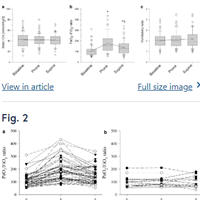
Prone Position in Intubated, Mechanically Ventilated COVID-19 Patients
During the COVID-19 pandemic, prone position has been widely adopted to treat mechanically ventilated patients with respiratory failure. The majority of patients improved their oxygenation during prone position, most likely... read more
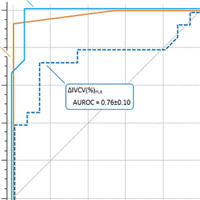
IVCDV is not a reliable indicator of preload responsiveness
During mechanical ventilation with Vt = 6 mL/kg, the effects of passive leg raising (PLR) can be assessed by changes in pulse pressure variation (PPV). If inferior vena cava diameter (IVCDV) is used, it should be expressed... read more

Effect of intubation timing on clinical outcomes of critically ill patients with COVID-19
The synthesized evidence suggests that timing of intubation may have no effect on mortality and morbidity of critically ill patients with COVID-19. These results might justify a wait-and-see approach, which may lead to fewer... read more
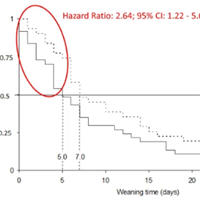
Replacement of Fentanyl Infusion by Enteral Methadone Decreases the Weaning Time From Mechanical Ventilation
The introduction of enteral methadone during weaning from sedation and analgesia in mechanically ventilated patients resulted in a decrease in the weaning time from mechanical ventilation (MV). A double-blind randomized... read more

24-Hour Esophageal pH Measurement in Mechanically Ventilated Children
The current study shows high incidence of gastroesophageal reflux on 24-hour esophageal pH-metry in mechanically ventilated children with medical diagnoses. The significance of this finding and its impact on ventilator-associated... read more
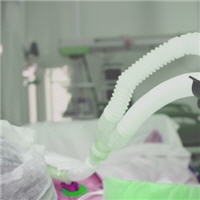
Early Tracheotomy Shortens ICU Stay and Lowers Risk of VAP
Compared with late tracheotomy, early intervention was associated with lower ventilator-associated pneumonia (VAP) rates and shorter durations of mechanical ventilation and ICU stay, but not with reduced short-term, all-cause... read more
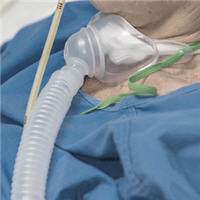
Ventilator Weaning and Discontinuation Practices for Critically Ill Patients
In this observational study of invasive mechanical ventilation discontinuation in 142 ICUs in Canada, India, the UK, Europe, Australia/New Zealand, and the US from 2013 to 2016, weaning practices varied internationally. Among... read more

International Variation in Intubation and Extubation Practices Among Critically Ill Patients Receiving Mechanical Ventilation
Requiring invasive mechanical ventilation acutely outside an operating room is, for many, the definition of critical illness. Although there may be debate regarding whether patients treated with noninvasive ventilation or... read more

Early sedation with dexmedetomidine in ventilated critically ill patients and heterogeneity of treatment effect in the SPICE III randomised controlled trial
In critically ill mechanically ventilated patients, early sedation with dexmedetomidine exhibited a high probability of reduced 90-day mortality in older patients regardless of operative or non-operative cluster status. Conversely,... read more

Body Mass Index and Risk for COVID-19
Obesity* is a recognized risk factor for severe COVID-19, possibly related to chronic inflammation that disrupts immune and thrombogenic responses to pathogens as well as to impaired lung function from excess weight. Obesity... read more

Effect of High-Dose Baclofen on Agitation-Related Events Among Patients With Unhealthy Alcohol Use Receiving Mechanical Ventilation
Among patients with unhealthy alcohol use receiving mechanical ventilation, treatment with high-dose baclofen, compared with placebo, resulted in a statistically significant reduction in agitation-related events. The primary... read more
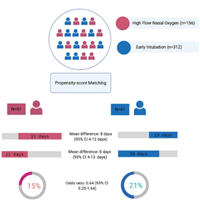
High-flow nasal oxygen in patients with COVID-19-associated acute respiratory failure
The use of high-flow nasal oxygen upon ICU admission in adult patients with COVID-19 related acute hypoxemic respiratory failure may lead to an increase in ventilator-free days and a reduction in ICU length of stay, when... read more

Association of Convalescent Plasma Treatment With Clinical Outcomes in Patients With COVID-19
Treatment with convalescent plasma compared with placebo or standard of care was not significantly associated with a decrease in all-cause mortality or with any benefit for other clinical outcomes. The certainty of the evidence... read more
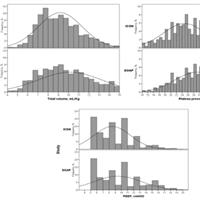
Temporal Changes in the Epidemiology, Management, and Outcome from ARDS
The frequency of and outcome from ARDS remained relatively stable between 2002 and 2012. Plateau pressure > 29 cmH2O and driving pressure > 14 cmH2O on the first day of mechanical ventilation but not tidal volume > 8... read more




